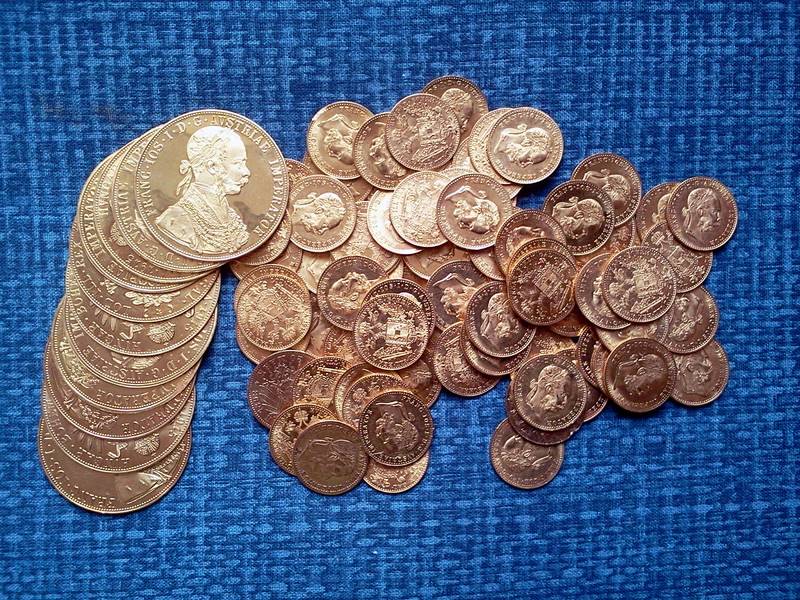Austrian ducats
Understanding Large and Small Austrian Ducats
A pile of Austrian ducats represents a collection of historical gold coins that were once pivotal in the Austrian economy. The Austrian ducat, a prominent currency in Europe for several centuries, came in two main varieties: large ducats and small ducats. Understanding the distinction between these two forms provides insight into Austria’s monetary history and economic practices.
Large Austrian Ducats
The large Austrian ducat was a substantial gold coin widely used in international trade and significant transactions. Introduced in the late Middle Ages, the large ducat typically contained a higher gold content, making it more valuable and trusted across Europe. Its size and weight made it a preferred choice for merchants and nobility engaging in large-scale exchanges. The large ducat not only served as a medium of exchange but also as a store of wealth, symbolizing economic stability and prosperity within the Austrian territories.
Small Austrian Ducats
In contrast, the small Austrian ducat was a lighter and less valuable coin used for everyday transactions. Introduced to complement the large ducat, the small ducat made daily commerce more manageable by providing a more accessible denomination for smaller purchases and local trade. Its reduced gold content made it more affordable for the general populace, facilitating smoother economic interactions among citizens and supporting the domestic economy. The small ducat was essential in ensuring that the Austrian monetary system was versatile and responsive to varying economic needs.
The Significance of a Ducat Pile
A pile of Austrian ducats, comprising both large and small denominations, would have been a common sight in marketplaces, banks, and noble households. This assortment allowed for flexibility in transactions, enabling individuals to handle both substantial investments and routine expenditures with ease. The coexistence of large and small ducats underscored Austria’s sophisticated approach to economic management, catering to diverse financial requirements and maintaining monetary stability.
Historical Context
The Austrian ducat played a crucial role during the Habsburg Empire, facilitating trade within Europe and beyond. Its reliability and consistent gold content made it a trusted currency, contributing to Austria’s economic influence. Over time, as economic conditions evolved, the introduction of smaller ducats reflected the need for a more adaptable monetary system capable of supporting both grand and everyday economic activities.
Conclusion
A pile of Austrian ducats, featuring both large and small denominations, encapsulates a significant aspect of Austria’s rich financial history. The differentiation between large and small ducats highlights the nation’s ability to balance large-scale economic transactions with daily commerce, ensuring a robust and flexible economy. Understanding these coins offers a glimpse into the economic strategies that underpinned Austria’s prosperity for centuries.
Contact Gold2me.com
Contact Gold2me.com. There is a simple rule at Gold2me.com: if we can help you, we do, whenever and wherever necessary, and it's the way we've been doing business since 2002, and the only way we know
You may contact us
over ![]() Telegram
messenger by using the username @rcdrun or
by
Telegram
messenger by using the username @rcdrun or
by WhatsApp Business. and it is best you complete the form below.
